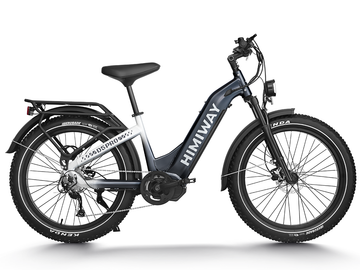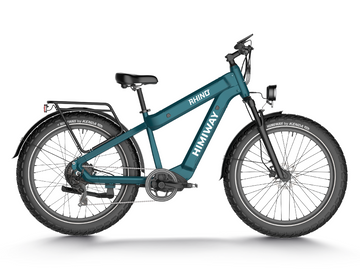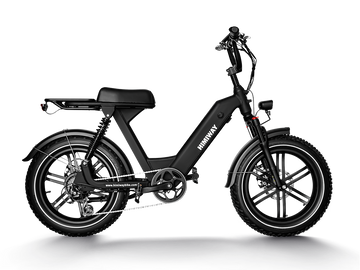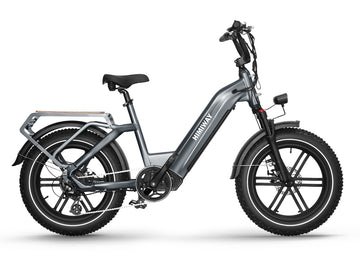Bike riding and dog ownership gained in popularity during the pandemic COVID-19 and naturally, many people want to combine the two. While taking your dog along on a bike ride, or dog cycling, isn’t new, knowing how to bike with your dog can help you both stay safe.
This article provides four tips for safe dog biking. Whether your dog wants to ride on or run alongside your bike, we’ve got you covered. Included are tips on gear and how to carry a dog on a bike, as well as leashes and leads if your pal is a runner. These tips will help make your bike ride with the dog more enjoyable and keep both you and your best buddy safe.
Is Your Dog Ready for Biking?
If you are like many dog owners, you enjoy taking your dog with you, and your dog loves to go with you, whether it is in the car, on walks or maybe when you are out for a ride on your bike. However, just because your dog loves to go in the car or for a walk, that does not necessarily mean your pal is ready to go along on a bike ride. This is especially true with electric bikes. Remember, you are likely to go much further and faster on your electric bike than you would on a typical road bike. To make sure you and your dog stay safe, a good first step is to make sure your dog is ready (and willing).
One of the most important factors in determining if your dog is ready for biking is your pal’s health. The health and fitness level of your dog, in addition to his/her eagerness to go along, should be your guide. This is especially important if you plan to have your dog run alongside your bike. Aspects of your dog’s health to consider include age, weight, and energy level. Does your buddy have conditions that would not be good for coming along on a bike ride such as arthritis, hip, or knee issues or sensitive paws? If your dog hasn’t seen a veterinarian for a while, this could be a good time to schedule a checkup.
Beyond health, another factor to consider is your dog’s obedience and temperament. Your dog may want to go on a bike ride, but may not have the right personality. If your dog gets easily distracted with sudden starts and stops or is known to dart after moving objects, you may want to consider another activity instead of dog cycling, or you may need to invest in some additional training.
Prepare Dog Biking Gear
If you’ve assessed your dog’s health, fitness, and willingness to go along on a bike ride, the next thing you’ll want to consider is gear. There are a lot of options to help keep you and your dog safe while out on a bike ride. The following are a few essentials when it comes to dog biking gear.
Leashes, leads, and harnesses are essential to keep control of your dog, which means keeping your pal safe. There are many types of leashes and harnesses to choose from. The most important thing is to purchase one designed specifically for a bike ride with a dog. Caution: Don’t use the one you use for walks, as these leashes can get tangled in the bike wheels and gears. Many experts recommend, and bike riders who participate in dog cycling prefer, using a fitted harness rather than a neck collar. A harness offers more stability and can prevent neck injuries. Another good option to consider is a hands-free leash. As the name suggests, these attach directly to your bike’s frame, so you can keep your hands on your handlebars. One of the most important safety features of a bike leash is that it can prevent sudden pulling and tugging, which can quickly lead to an accident. Some bike riders prefer to use a bike tow leash. You attach the leash to your bike’s rear wheel, giving you greater stability and keeping your dog next to you in clear view. While we are talking about leashes, it is also a good idea to bring a regular leash if you are going to take a break and get off your bike for any reason.
Visibility is another critical factor in safe riding. You want to make sure both you and your dog are highly visible in all types of light and weather. Again, there are many options to help with visibility. For your dog, a reflective dog harness is a good place to start. Other options include reflective vests and lights. LED lights that are very bright and easily seen by drivers are now available embedded in many different products and materials. You can find LED’s in pendants, collars, leashes, and vests. When selecting a product, make sure the lights will be visible from all angles. Of course, your bike should be outfitted with front and taillights, and you should also wear clothing that includes reflective strips or at least light and bright colors.
If your special buddy wants to go with you on bike rides but isn’t up to the distance, or there is a chance she might get tired, you should look into one of the easy ways to transport your dog while you are peddling your bike. There are many options to consider, including baskets, backpacks, and trailers. Regardless of the type of transport you choose, you’ll want to introduce it to your dog slowly and practice with your dog before you hit the open road or trail. You may feel a bit shaky at first having the extra weight on your bike. You also need to be confident that you can maintain your balance should any unexpected movements occur. Make sure you and your dog are comfortable, stable, and secure while riding. If you are using a basket, make sure there is a leash attached so your pal can’t jump out unexpectedly. If you take a break from riding and need to step away from your bike for any reason, don’t leave your dog in the basket. Your bike could fall over and potentially injure your best pal.
Another transport option, which is great for multiple dogs and larger dogs, is a bike trailer/carrier. Just as we discussed with leashes, it is best to purchase a trailer/carrier designed specifically for dog cycling. A trailer or wagon for dogs should be big enough for your pet to sit, stand, lie down and turn around in comfortably.
Water intake is essential for both you and your dog when riding, especially in hot and dry weather and on longer rides. Make sure you both have an easy way to stay hydrated while riding. A convenient option is to carry a collapsible water bowl for your dog and a water bottle for you.
Last but not least on our list of safety gear are paw protectors. Just as you should have good shoes and gloves, it is equally important to make sure your dog’s paws are protected. This is especially essential if you will be going longer distances, riding on rough or hot or cold surfaces.
Train Your Dog Before Biking
Okay, you’ve checked your dog’s health, fitness, and eagerness to join you on a bike ride. You’ve got the gear to help keep you and your dog safe. The next step is to do some training. If you’re like most of us, you want to just get on your bike, call your dog and start pedaling. But a little training will go a long way to keep you and your dog safe. Here are a few techniques to train your dog to make sure both of you stay safe.
Familiarize your dog with your bike and the gear you will be using. This is especially important if you recently purchased a new bike or haven’t ridden in a while. It may also be especially significant if you have an electric bike, since they are larger and heavier and could be more intimidating. Help your dog get used to your bike. Oh, and make sure you are comfortable riding it in a variety of conditions before you bring your dog along. Take a stepwise approach. Let your dog see and smell your bike when it is stationary. Next, slowly walk the bike with your dog on a leash. If your pal does a good job and keeps pace, give treats frequently to reinforce the desired behavior. Next, advance to taking a slow ride so your dog can comfortably walk next to you. As you and your dog advance, you can add signals to the training. Important signals to add include turn, slower, faster, and stop.
Take Care of Your Dog's Paws
Your dog can’t tell you when his “feet” are starting to hurt so it is up to you to protect his paws. Many dogs love running so much they will just keep going until it is too late and their paws are injured. The best way to protect your dog’s paws is to check them regularly. It is a good idea to check paws before, during and after each ride. This is especially essential for longer rides. Another option is to use paw protectors. These come in many forms, from dog paw wax, dog shoes and booties, to socks, and stick-on pad protectors. You may need to try a few options to find the one that works best and is acceptable to your dog. Whenever possible try to ride on softer surfaces such as grass and dirt roads. And finally, save your dog’s paws by avoiding rides with your dog on extra hot or cold days.
Summary
Riding a bike with your dog at your side is one of the most enjoyable and rewarding ways to spend time outdoors. An hour or so of dog cycling can improve the health of you and your dog and gives you another opportunity for bonding. Unfortunately, bike riding does involve some risk and a bike ride along with a dog can add to that risk, so you need to make it as safe as possible.
There are a few easy things you can do when you are ready to bike with your dog to make sure it is not only a fun experience, but also a safe one. First, make an assessment to see if your dog is ready, willing, and able to go on a bike ride. Next, you’ll want to invest in the proper gear to keep you both safe. This includes gear to make you both visible, leashes, leads, and harnesses to maintain control, and carriers should your dog prefer to ride. Once you’ve got the gear, take the time to learn how to bike with your dog. Arrange for some practice sessions and do some training. Start slow and gradually build up to longer distances and more difficult terrain. Finally, don’t neglect your dog’s paws and be sure to stay hydrated. Follow these tips, and you will enjoy many hours of safe riding with your dog on your bicycle.






































